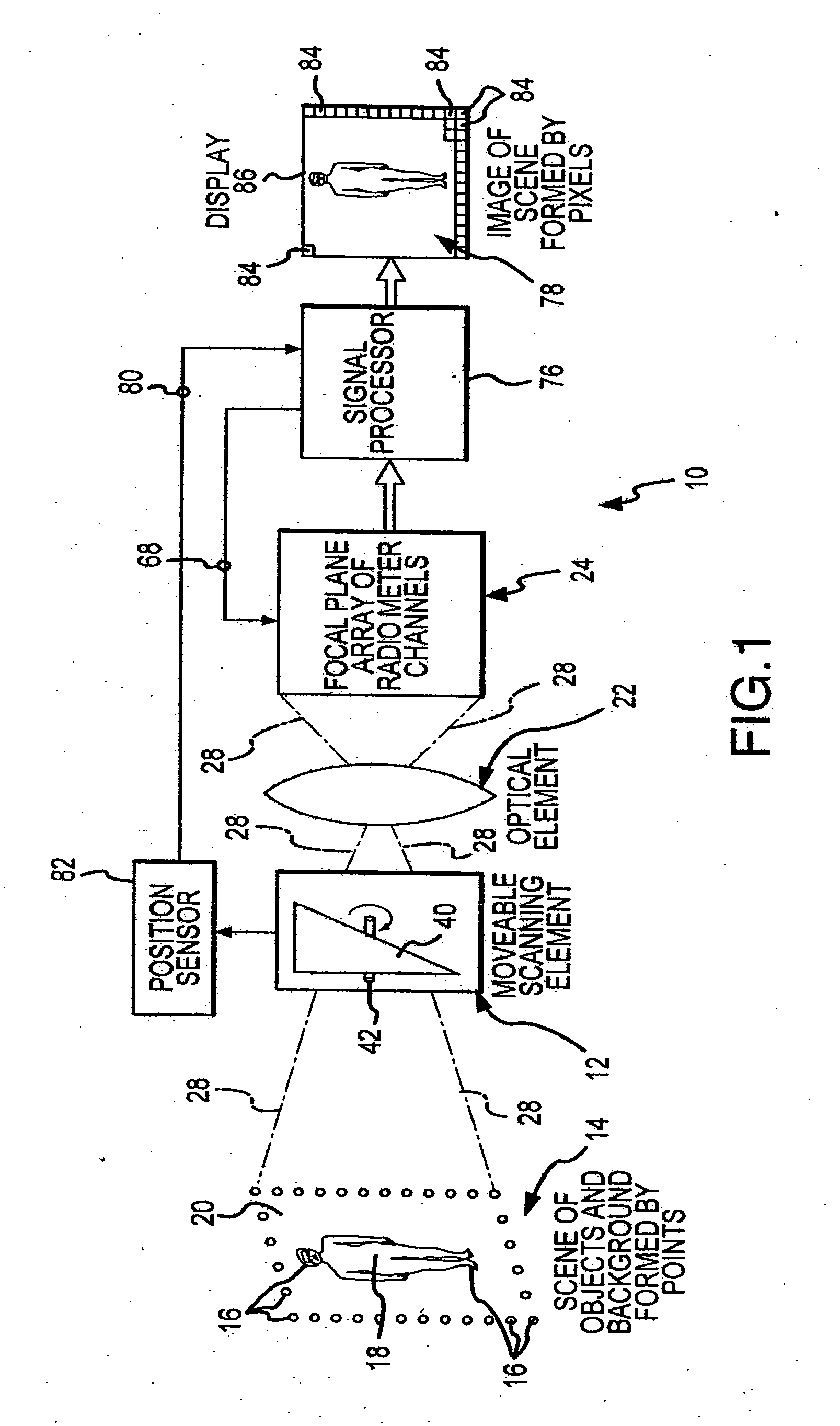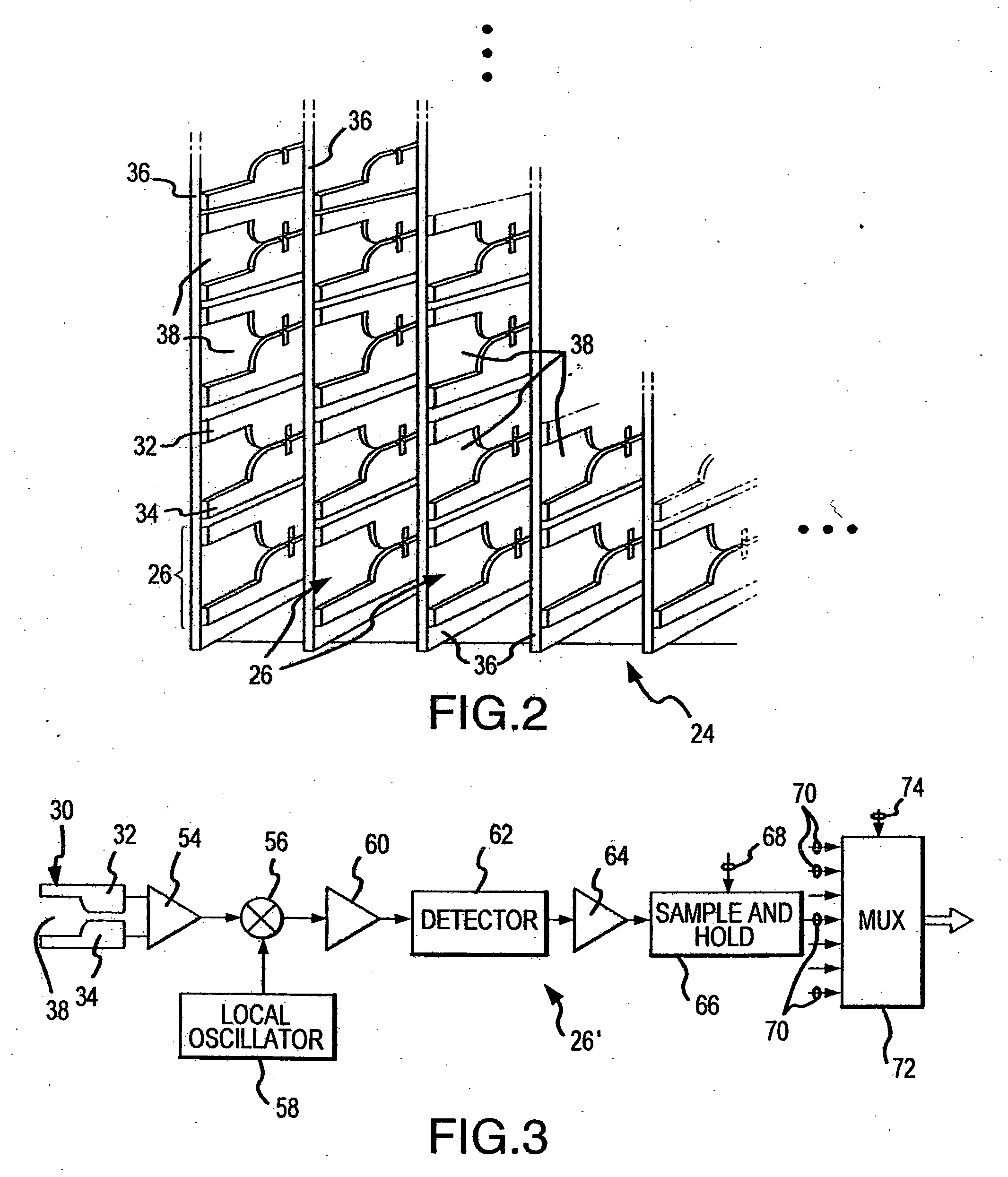Offset drift compensating flat fielding method and camera used in millimeter wave imaging
a technology of offset drift and flat fielding, applied in the field of millimeter wave imaging, can solve the problems of not reaching the highest degree of flat fielding, and achieve the effects of effective account, good flat fielding, and uniform respons
- Summary
- Abstract
- Description
- Claims
- Application Information
AI Technical Summary
Benefits of technology
Problems solved by technology
Method used
Image
Examples
Embodiment Construction
[0032] A camera 10, shown in FIG. 1, incorporates and operates in accordance with the various aspects of the present invention. The camera 10 includes a movable scanning element 12 which receives emitted and reflected radiation energy emanated from a scene 14. The scene 14 is formed by points 16, and each of the points 16 is either part of an object 18 within the scene 14 or part of a background 20 within the scene 14. The points 16 of the scene 14 emanate radiation energy with an intensity which is related to the brightness temperature of that point. The emanated radiation energy includes energy in a millimeter wavelength frequency band which is emitted and reflected from the objects 18 and the background 20.
[0033] The movable scanning element 12 receives emanated energy from the scene 14, and directs or steers that energy through an optical element 22 to a focal plane array 24 of channels 26. Each channel 26 will typically be a radiometer channel when the camera 10 is used in pas...
PUM
 Login to View More
Login to View More Abstract
Description
Claims
Application Information
 Login to View More
Login to View More - R&D
- Intellectual Property
- Life Sciences
- Materials
- Tech Scout
- Unparalleled Data Quality
- Higher Quality Content
- 60% Fewer Hallucinations
Browse by: Latest US Patents, China's latest patents, Technical Efficacy Thesaurus, Application Domain, Technology Topic, Popular Technical Reports.
© 2025 PatSnap. All rights reserved.Legal|Privacy policy|Modern Slavery Act Transparency Statement|Sitemap|About US| Contact US: help@patsnap.com



